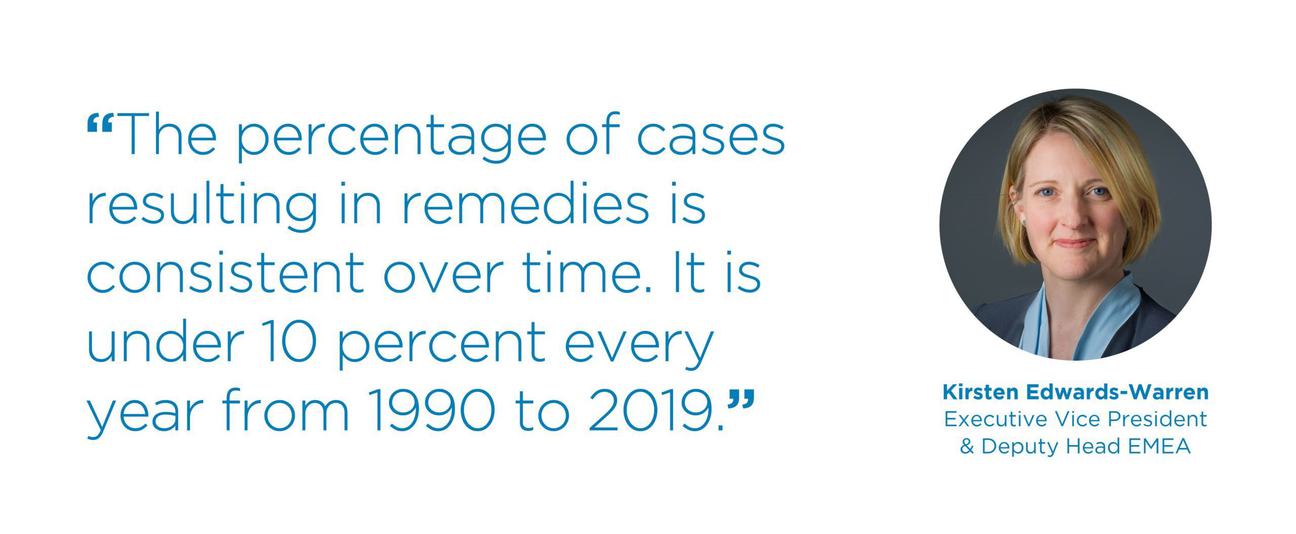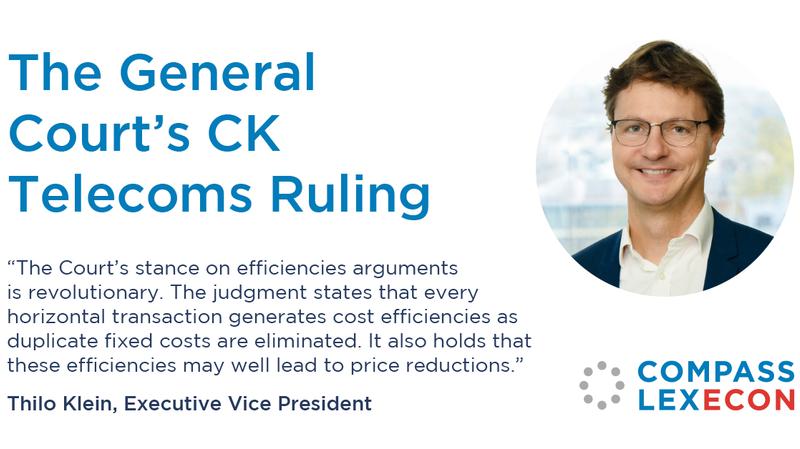Remedies: Design, Implementation & Revision

Share
Kirsten Edwards-Warren joined speakers from the European Commission, the UK Competition & Markets Authority, the French Competition Authority, and the South African Competition Commission on a panel at the 2021 International Mergers Conference, organized by University College London and Concurrences.
Kirsten noted that the percentage of cases resulting in remedies is consistent over time. It is under 10% every year from 1990 to 2019. This stability challenges the commonly-held idea that DG COMP is getting more and more interventionist. It is also interesting to see that the prevalence of behavioral remedies has increased over time. From 2013 to 2021, 20% of cases are behavioral. Behavioral remedies are involved in eight cases in that later period as compared to one in a similar earlier period (2005-2012). In that same period, of all the non-horizontal Phase II remedy cases over the last 15 years, close to 80% involved a behavioral remedy and just over 20% involved a structural remedy, showing that there are still structural remedies in non-horizontal cases.
Many of the behavioral remedies (eight out of nine) have an access component to them, ASL/Arianespace
being an exception to this trend. Access remedies have been implemented in Google/Fitbit for instance – ensuring that competing firms could access Fitbit data to engage Fitbit users. Remedies, in this case, were controversial, with dominance and privacy concerns being brought up by commentators that thought the Commission did not go far enough. Other commentators were of the opinion that the Commission was right not to exceed its remit in terms of remedies.
The geographical reach of remedies sometimes extends outside of the European Economic Area ("EEA"). Of all 70 Phase II cases since 1990, 14% involved remedies that touched other countries. They were almost all cases where the Commission had found that the market was global, and they had accepted divestment of an asset outside of the EEA. Not surprisingly, the United Kingdom, Norway, and Switzerland get lots of mentions in the remedy discussions, but also the U.S., China, and Australia.
Remedies can be decided based on different types of evidence: in Phase, I cases, market investigations are the main source of evidence cited in decisions, followed by market shares, with economic evidence and internal documents seeming secondary sources. In Phase II remedies decisions, the evidence base is much more balanced across these four types of evidence.














